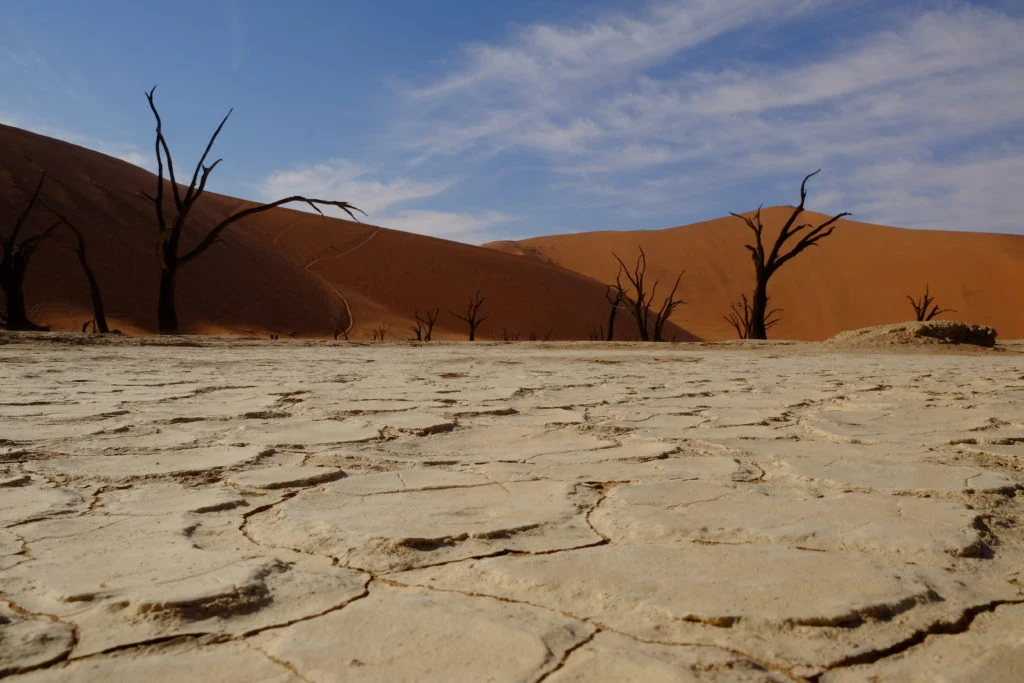The Namib Desert, the oldest desert on Earth, is located in the Namib Naukluft Park, the fourth largest nature reserve in the world, covering an area of 49,768 sq. km. The name "Namib" in the language of the Nama people means "a place where there is nothing."
 |
| Namib Desert |
Giant dunes and miles of reddish sand out of the ordinary. These elements are the protagonists of the photos that can be seen in magazines or social networks of the Namib desert. A special place with a unique and unrepeatable landscape that takes you to a distant planet, one of the few places in the world where you can be completely alone for many kilometers around.
 |
| Namib Desert |
A lunar landscape with dunes and desert roads that have been the main claim to become the chosen setting for the movie Mad Max 4, a film set in a desert world where the strongest survive. A highly controversial shoot for environmentalists and hoteliers for whom the defense and preservation of the Namib Desert comes first due to its uniqueness.
The Namib Desert, the oldest in the world
Experts say that it is the oldest desert in the world. Located in Namibia, the Namib Desert also known as Sossusvlei was formed more than 65 million years ago. Its uniqueness has made it a world heritage site since 2003. A unique desert, which meets the sea, and which runs parallel to the coastline of the Atlantic Ocean, in whose northernmost part it is called Costa de Los Skeletons, due to the large number of shipwrecks that occurred in its waters and whale skeletons that can be seen from the air.
The tallest dunes in the world are in Namibia
The famous DUNE 45, is the name of one of the landscapes most photographed by travelers on safaris in Namibia. A visual spectacle of sand of multiple reddish tones, wherever you look and where travelers climb to see the sun rise. Kilometers and kilometers of sand that can be seen from a distance (you turn off at Km 45 and that impact travelers as they approach in their safari vehicles. The most impressive dunes are found in the Sossusvlei salt flat, which in African It means “the point of no return.” Here you can see the highest ones, reaching more than 300 meters in height.
 |
| Namib Desert |
Deadvlei, Namibia's salt flat
Like any desert worth its salt, it has its life and death stories. And in the Namib desert the obligatory stop is Deadvlei, which as its name suggests is "dead lagoon". The years have led it to become a valley populated by trees, mainly petrified acacias, which can reach 900 years of existence. A unique picture, where the contrast of colors is wonderful, which arises from the desertification of this area.
A desert as big as Castilla La Mancha
The Namibian desert has an area of approximately 81,000 km² and is located within the Naukluft National Park. A living ecosystem, whose length is about 2,000 km, that advances moved by the strong winds of the Atlantic Ocean. A desert that forms the backbone of the country from north to south and that we travel through on our Okavango Route, stopping at these emblematic places.
 |
| Namib Desert |
The Welwitschia and the Oryx and the kings of the Namib desert
For lovers of African flora and fauna, the desert is not the place to observe more animals and plants, however the Namibian desert has a unique species in the world, the Welwitschia. A plant whose appearance does not resemble any plant and that is born and lives comfortably in the desert.In terms of fauna, the oryx, a type of gazelle, lives in this area of Namibia at ease since it is able to survive in the most adverse conditions.
